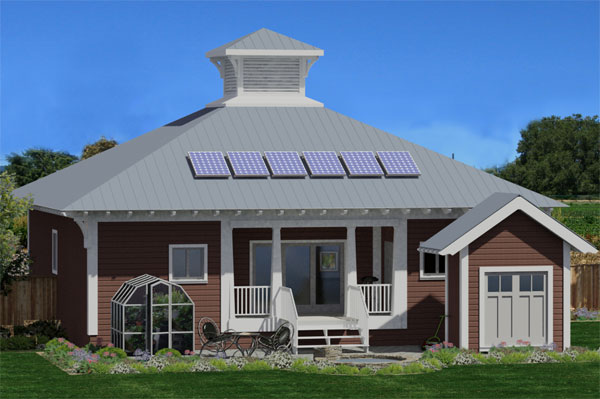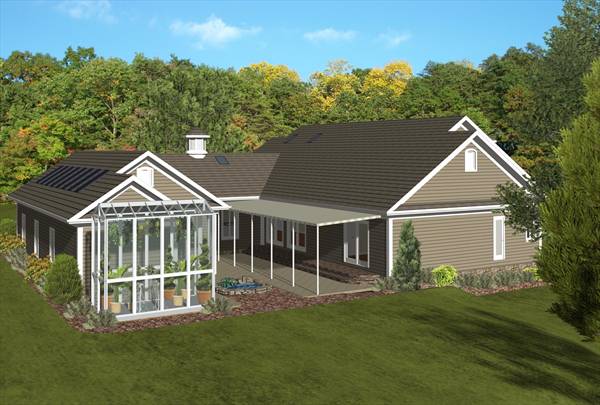Improving your property can be difficult when you’re trying to be environmentally conscious and you’re working on a budget, but being eco-friendly means saving money in the long run! Here are some great ways you can upgrade your home to be green without breaking the bank.
1 – Improve Your Insulation
Everybody knows that better insulation is a huge part of saving on home heating and cooling costs, but most people don’t know how insulated their homes actually are or what exactly they can do to improve it. Fiberglass insulation is an inexpensive option that most homes already utilize, but there are plenty of places that are often left uninsulated. Attics and garages are major sources of heat loss, and sometimes you can even feel the difference between two rooms in your house and know that one wasn’t insulated as well as the other. When updating an existing home, blown insulation, which is piped into the walls through small holes that are closed afterward, is your best bet. Even better, cellulose and recycled materials are now available to insulate with, making the process even more eco-friendly.
Keeping heat out of your home in the hotter months is also a great way to save energy and lower your utility costs. This is where reflective insulation comes in. This thin, papery material is installed inside the outward facing walls and roof, and it sends the sun’s heat back the way it came. Used together with thermal insulation, your home will be ready for all seasons!
The Eco-Box House Plan is one of The House Designers’ most popular small ENERGY STAR, Green house plan featuring both active and passive energy-saving technologies.
2 – Control Air Movement
Even with the best insulation in your walls, there are places that leak heat and cost you money. The spaces immediately surrounding windows and doors are the worst culprits, but you might also notice drafts under baseboards and between interior rooms. Short of doing an overhaul to install everything brand new, you can help stop the air moving in and out of your house by caulking gaps and taking advantage of things like curtains. You would be surprised to know just how much heat can be stopped by some thick drapes.
Controlling how the air inside your home can move also helps save energy. Put draft guards under doors that aren’t flush against the floor and you’ll notice the difference. Installing ceiling fans is a great way to keep yourself comfortable year-round as well—they give you a breeze in the summer and help to push the hot air that rises in the winter back down where it’s needed. Ceiling fans can help you maximize the effects of your heating and air conditioning, so don’t think that they’re an outdated technology!
3 – Limit Water Use
Showering at the speed of light is not the only way that you can save water. Installing aerators on your fixtures is a fantastic way to cut down on usage without sacrificing cleanliness in the process. An aerator is screwed onto the tip of your faucet and limits water flow while mixing the stream with air. The result is a tap that doesn’t splash and still has some pressure to it, and since they cost just a few dollars and you can install them yourself, aerators are probably the easiest decision you’ll ever make to help conserve the environment.
There are also plenty of water-saving shower heads out there that give you the same benefits, so spend some time updating the fixtures in your bathrooms to really help make a positive impact.
This one-story cottage house plan features solar panels, a greenhouse, solar slab with retractable awning and SIP walls.
4 – Put Your House on a Timer
It seems ridiculous—because it is—that you should have to pay for energy that you don’t actually use. If your heat is on all day when you’re at work and your entire family is out of the house, a good amount of that energy is lost through windows and other means without anybody benefitting from it. This is where a new, high-tech thermostat can come to your rescue. These programmable devices put your heat on a timer to ensure that it’s nice and warm when you’re home without having your furnace running all day and wasting fuel. Better yet, for a couple hundred dollars, you can get a Wi-Fi-enabled thermostat that you can control remotely and that monitors weather conditions for you in order to better control your energy usage.
5 – Let It Grow
The amount of water and fuel that goes into a perfectly-manicured lawn can be outrageous depending on where you live. Your landscaping is, therefore, a very important part of your home’s eco-friendliness. Most problems arise when people try to sustain a beautiful but unrealistic lawn composed of high-maintenance grass, but you can still have a fantastic yard without it. Look into hardier species that are suited to your climate and that will grow without too much intervention on your part. Sometimes the trick to the greenest lawn in the neighborhood is letting what wants to grow there thrive on its own—clover is seen as a nuisance by some, but it sure is green when everything else is shriveling in the summer heat!
Also check out the native trees and shrubs you can add to help vary your landscaping to give you something beautiful to look at in every season. These sacrifices might not seem like an upgrade, but when you consider the resources saved in the process and that your yard will look better as a result, they definitely are!
Looking to Build Green? If you’re looking to build a new home, you’ll want to check out The House Designers’ collection of ENERGY STAR/Green House Plans. These plans meet the highest standard for energy-efficiency and are available in a wide range of styles and styles.
- Transitional Home Design Is IN Right Now - September 9, 2022
- Texas Leads the Trends in Modern Farmhouses - August 19, 2022
- Finding Land to Build Your Dream Home - July 11, 2022


